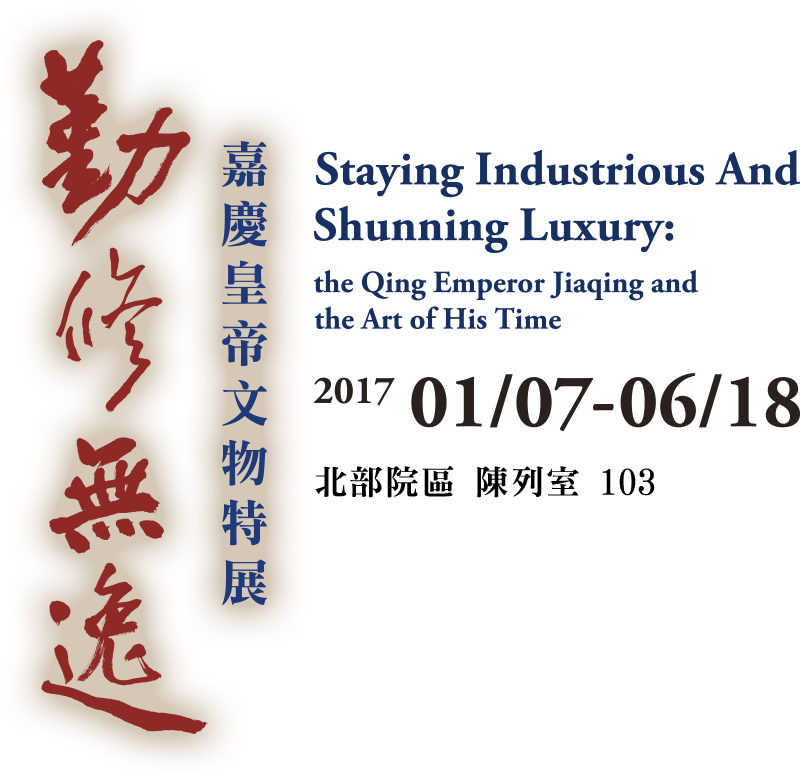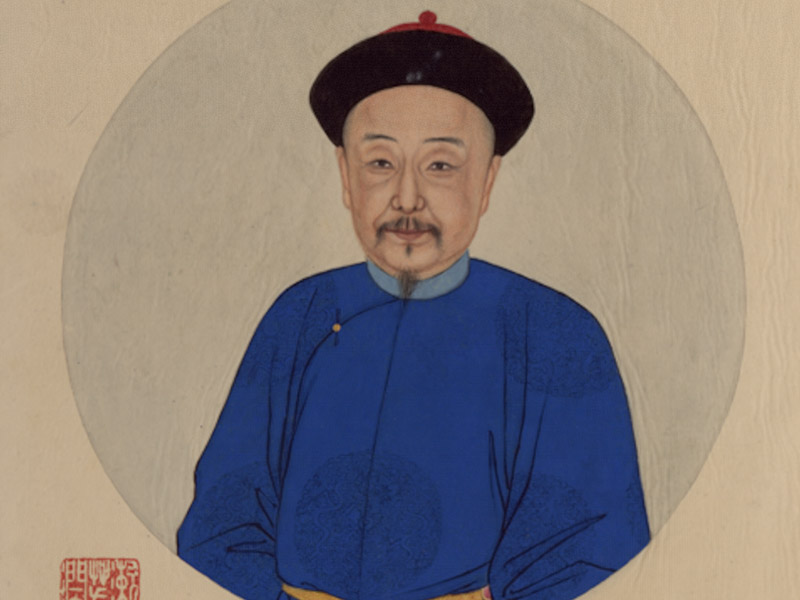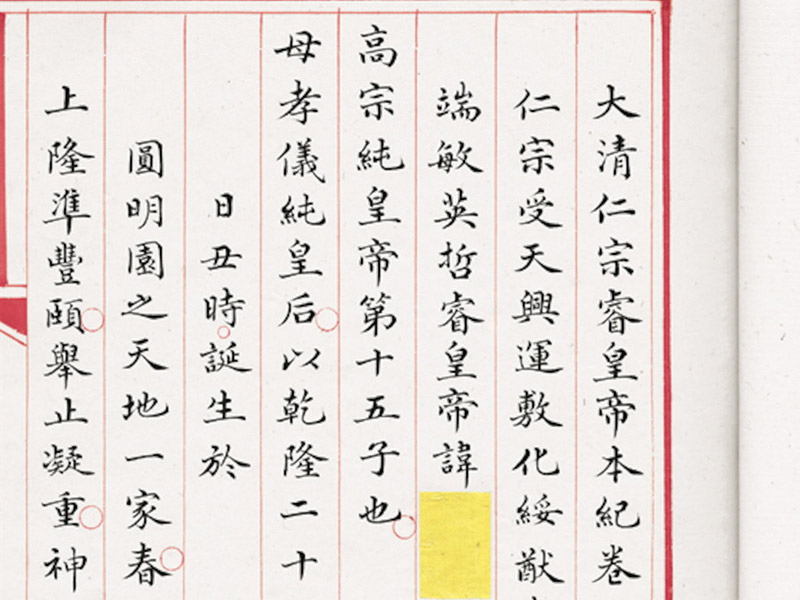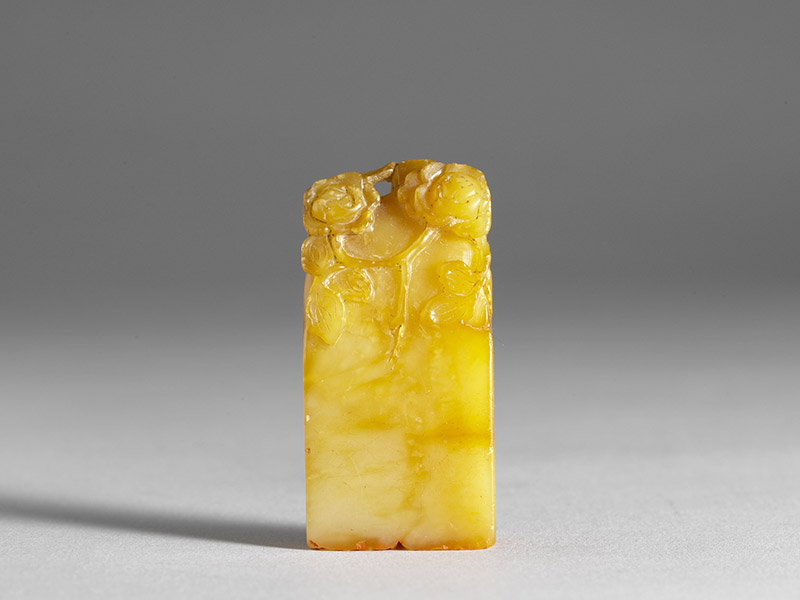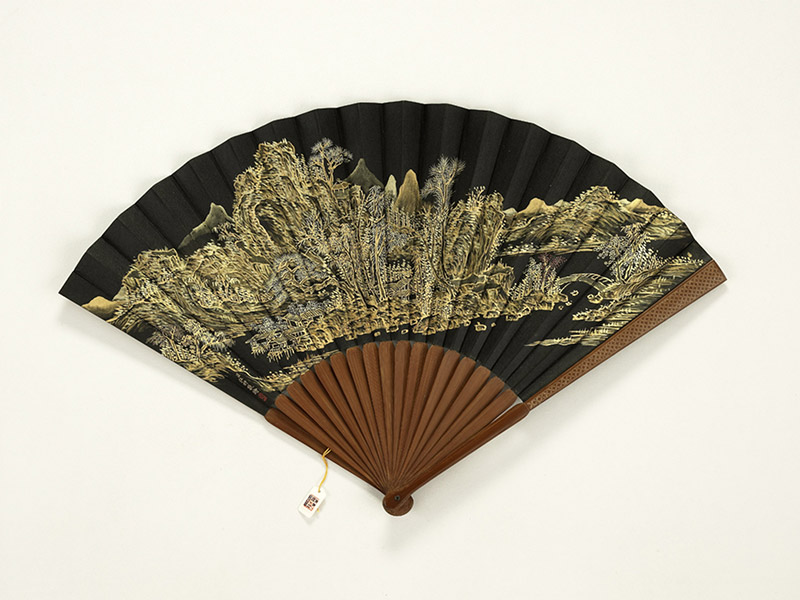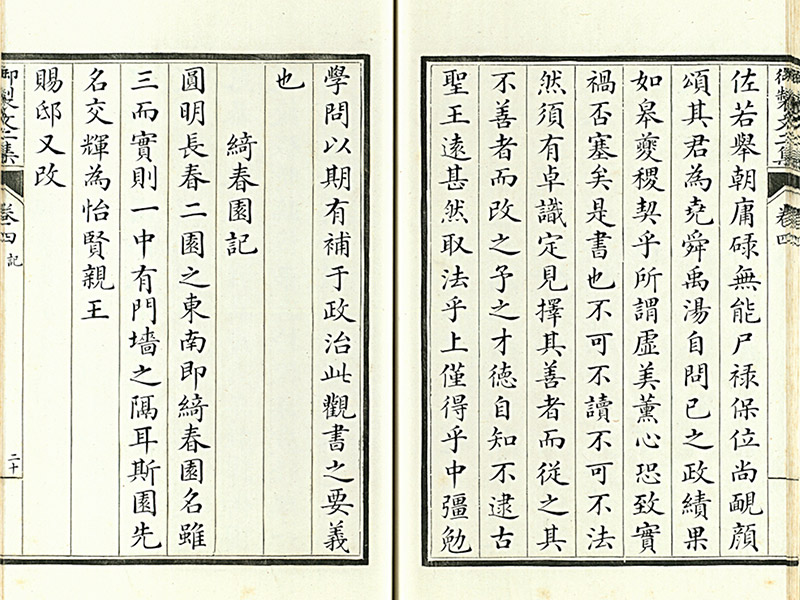After assuming the throne, Jiaqing changed the first character of his given name to the rarer Yong (顒) for fear of the original Yong (永) becoming a naming taboo that would cause disturbance to civilian life. As the 15th son of the Qianlong emperor, he was instated as Prince Jia of the First Rank and then formally declared Crown Prince. He became the emperor upon Qianlong's abdication, but only took up the reins of government after his father passed away. This section features documents and artifacts relating to each stage of Jiaqing's life, from the time he was an imperial son to his ascension and succession to the throne, so that the audiences may have a glimpse into the cultivation of the emperor and his life at the court.
Portrait of the Jiaqing emperor
Daqing Renzong Ruihuangdi Benji (Biography of Emperor Rui, Renzong, of the Great Qing)
- Yellow silk-bound Chinese edition of the Qing Historiography Institute, Qing dynasty
Connected round seal for "Fifteenth Imperial Son" and "Zhusu Garden"
- Shoushan stone, Qing dynasty (1644-1911)
- Seal face: 2.5 x 1.2 cm, height: 5.1 cm
Hong Wu's Landscape at the Hall of Joyful Longevity on New Year's Day, with Inscription of a Poem by the Qianlong Emperor
*Rotation 2:04/01-06/18
- Written by Yongyan
- Paper fan
- Qing dynasty
Record of the Qichun Garden
- From Fascicle 4 of Yuzhiwen Erji (Second Anthology of Imperial Texts)
- Written by Emperor Jiaqing
- Black-lined manuscript edition of the Imperial Household Department, 20th year of the Jiaqing reign (1815), Qing dynasty
